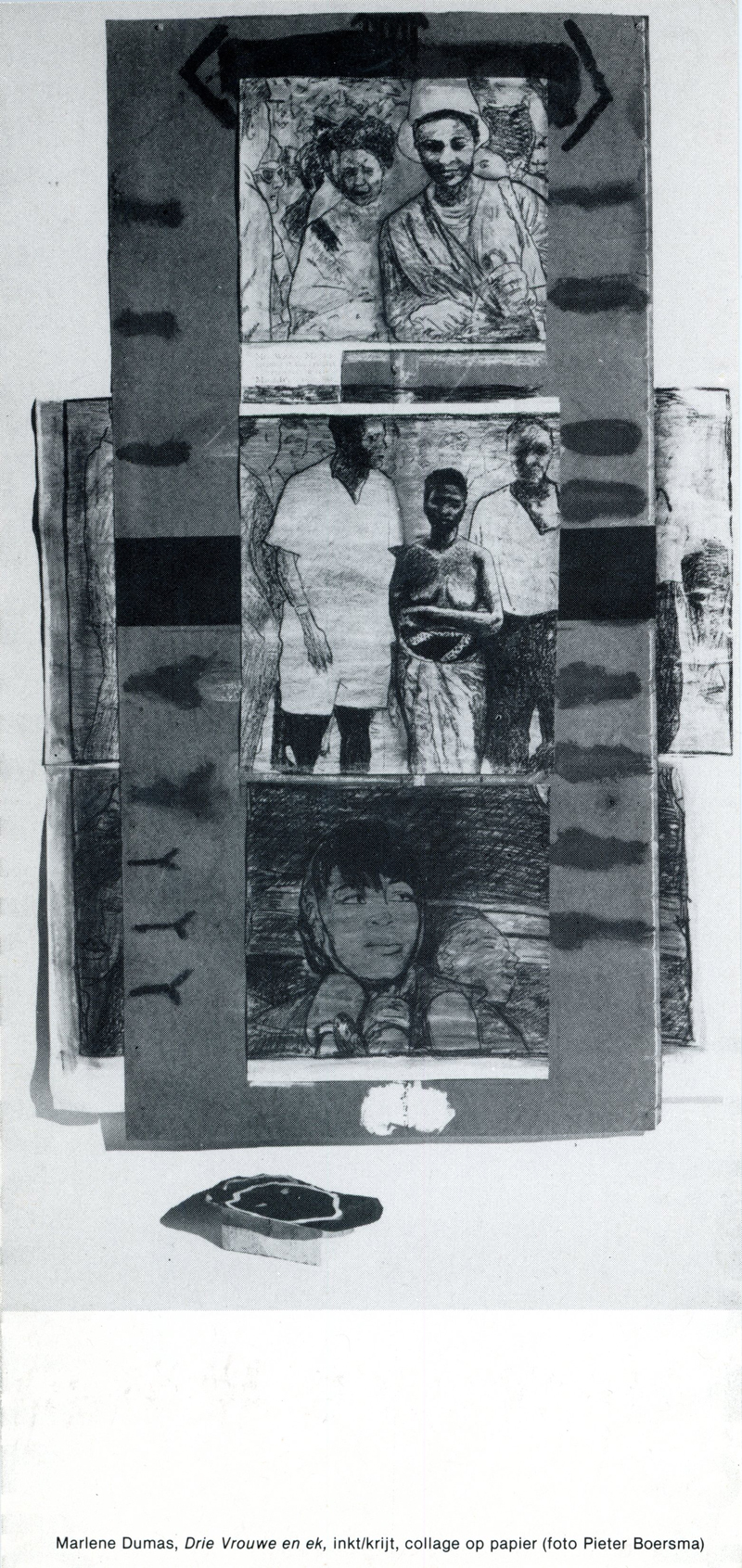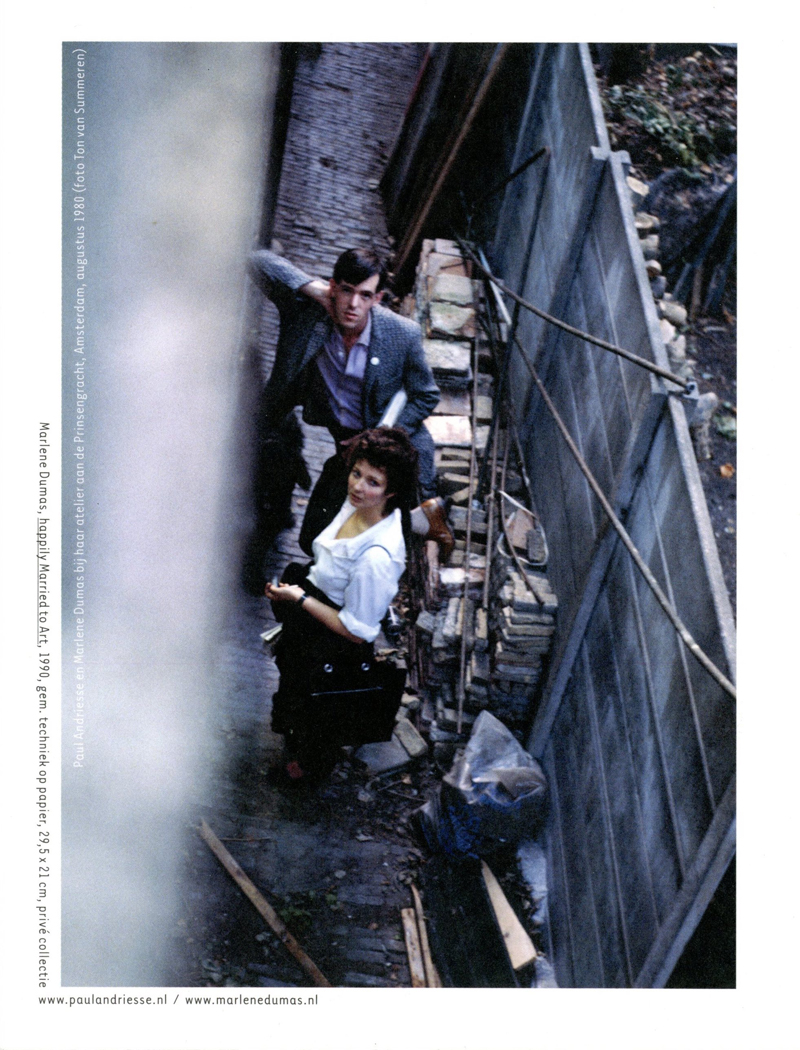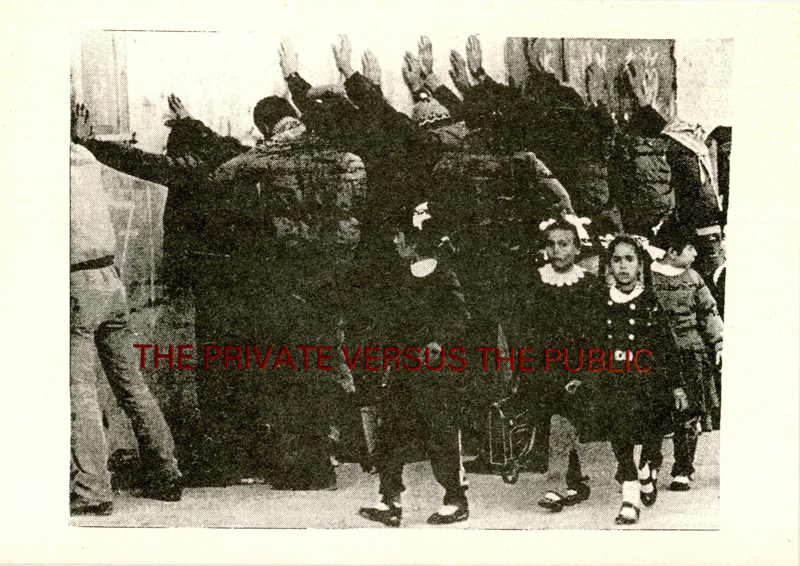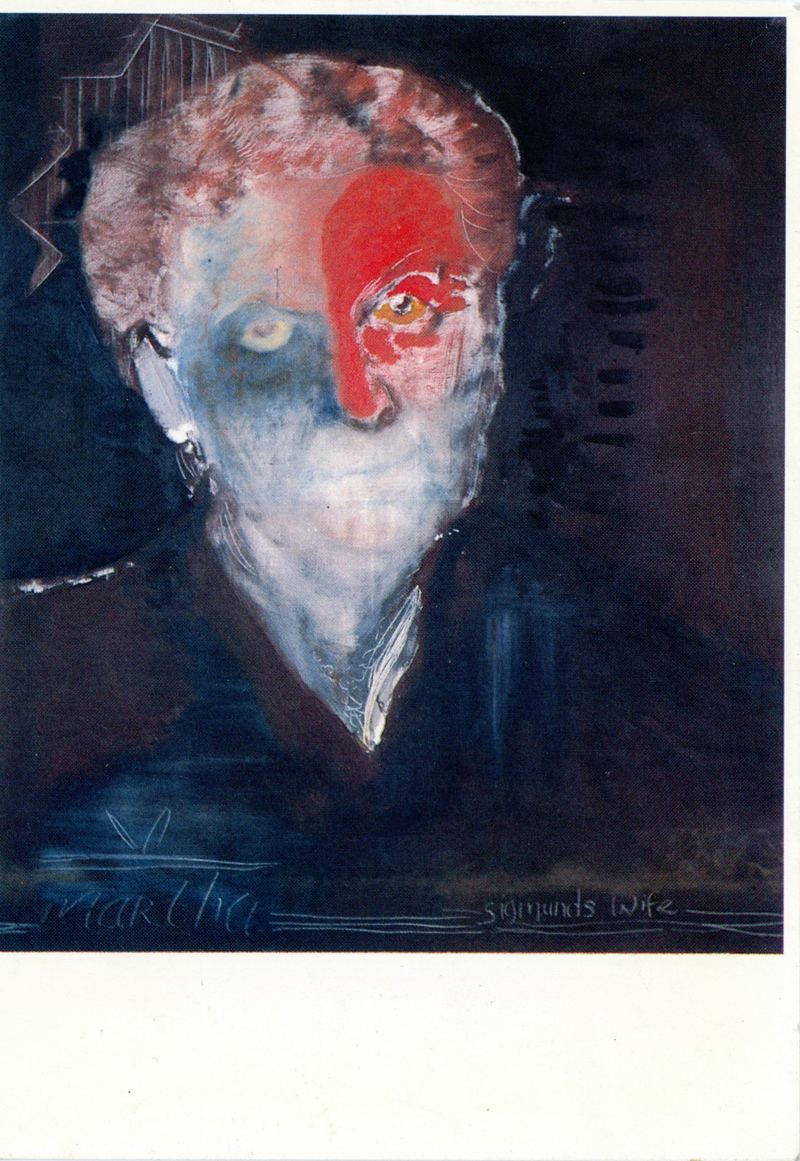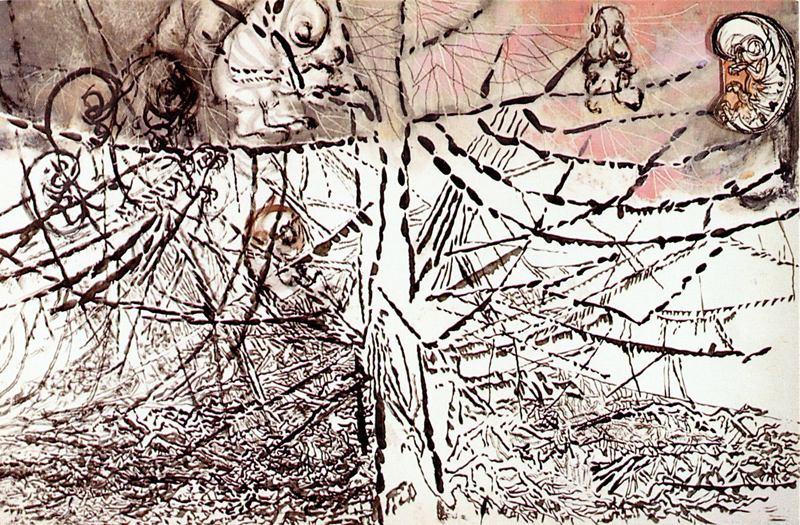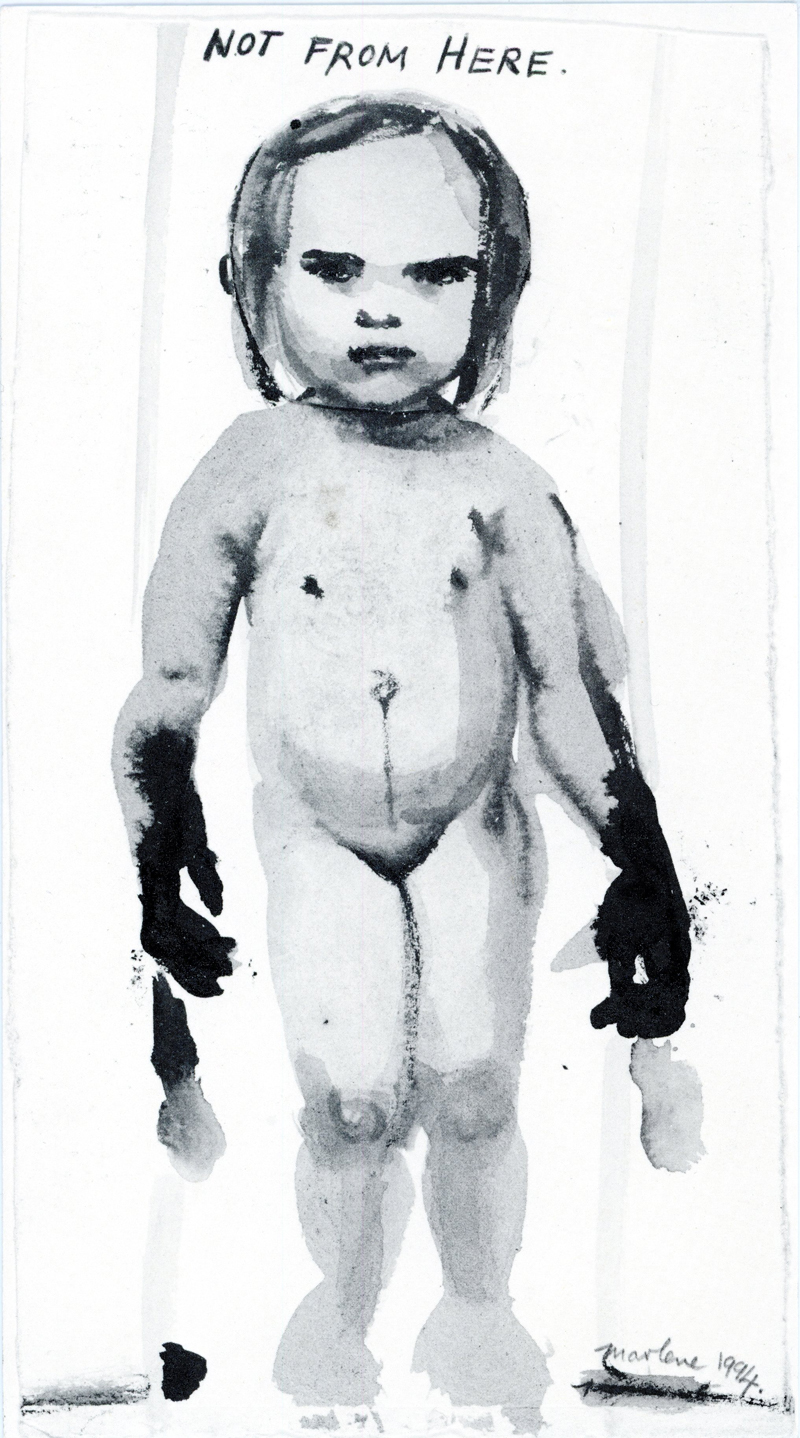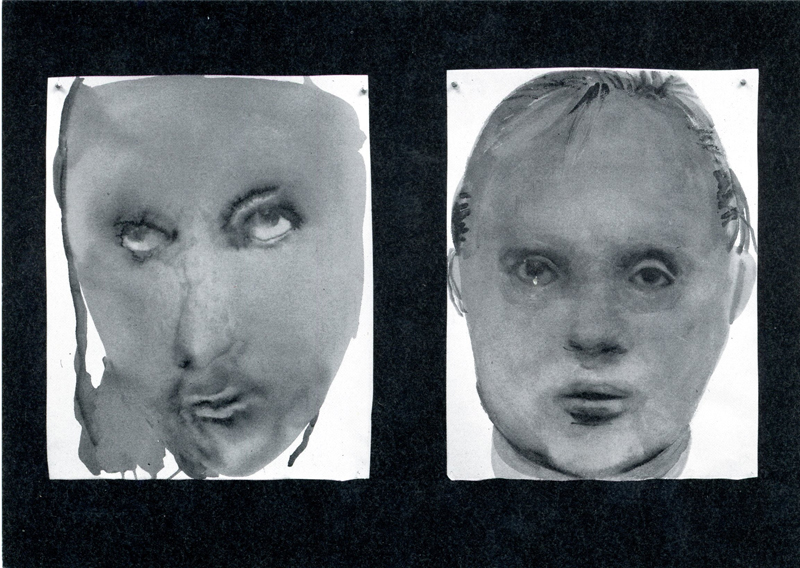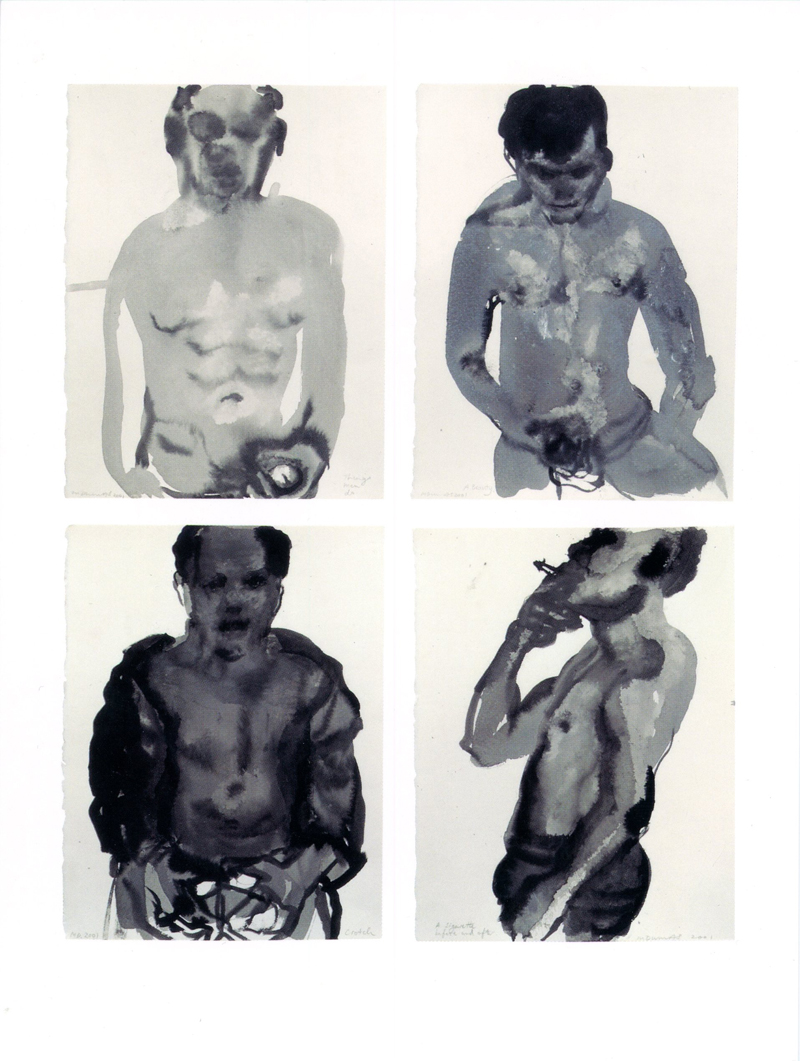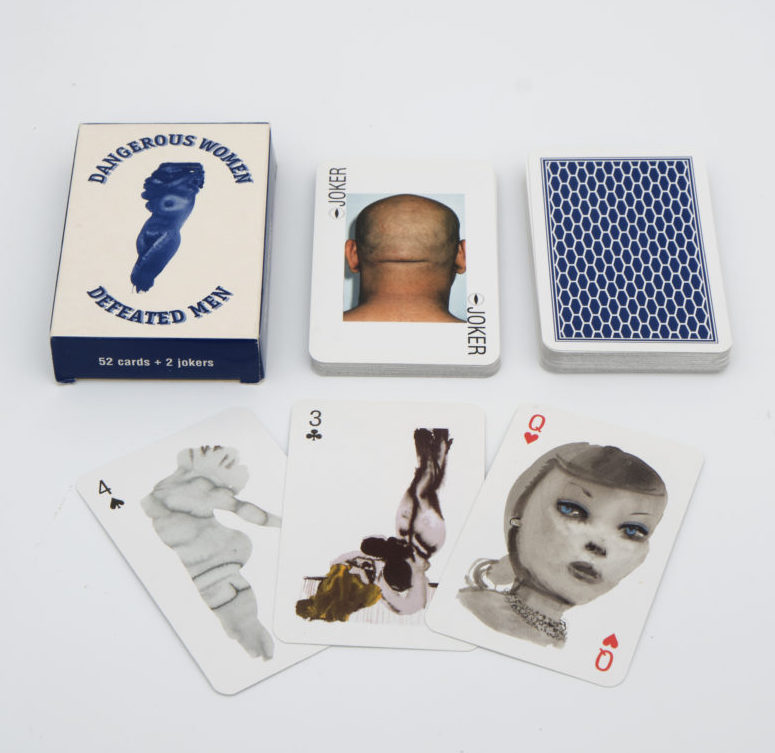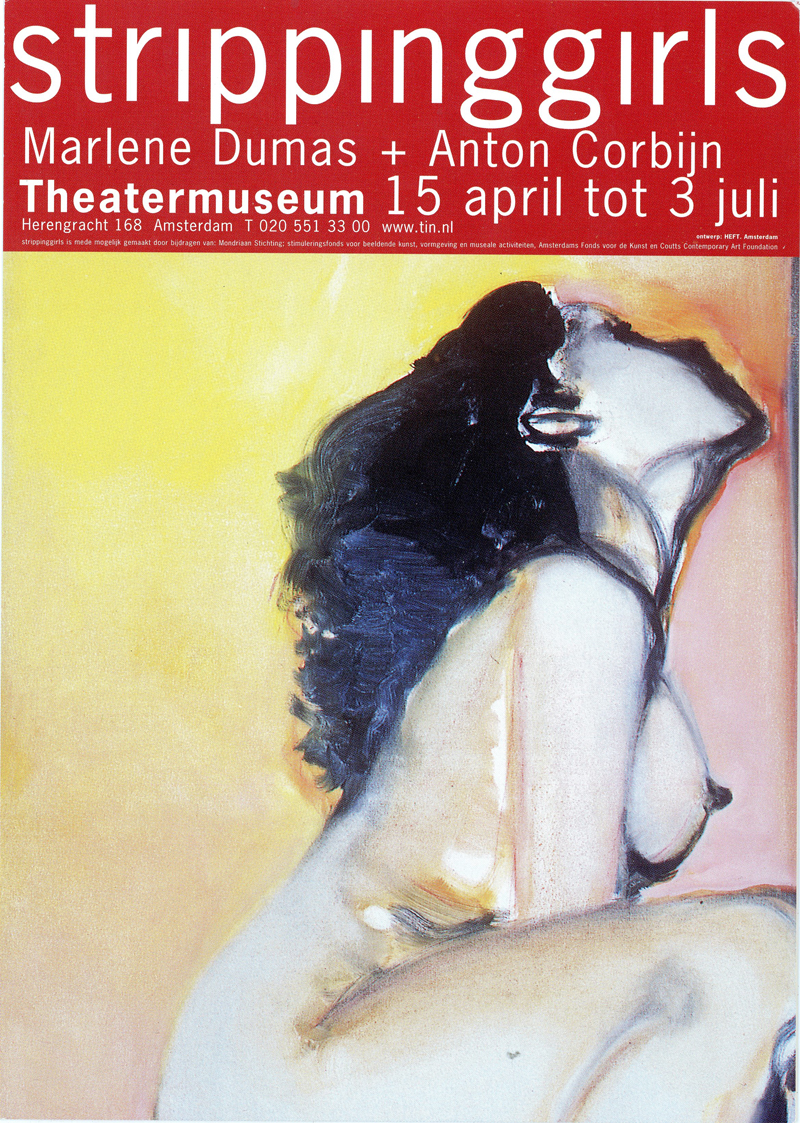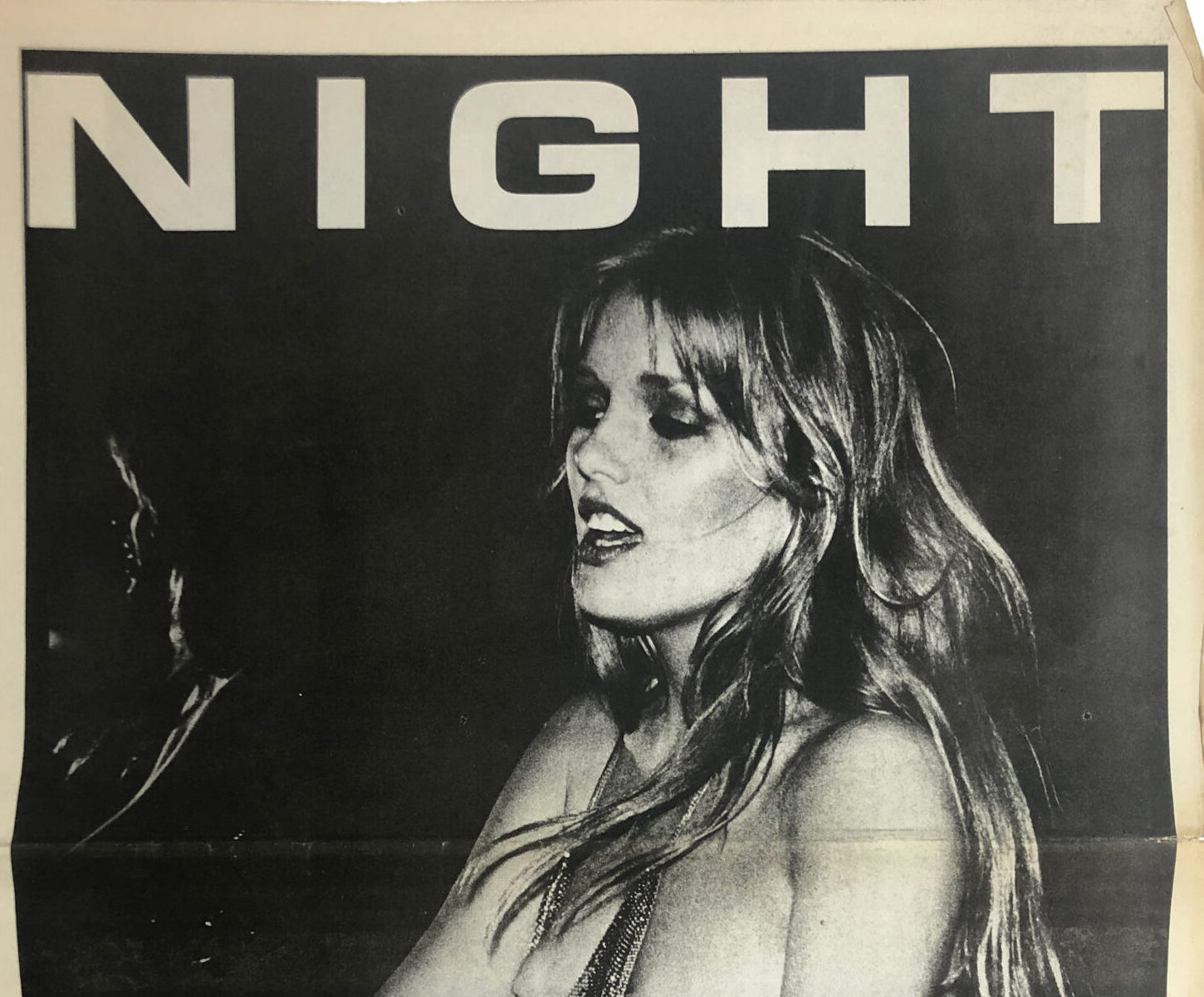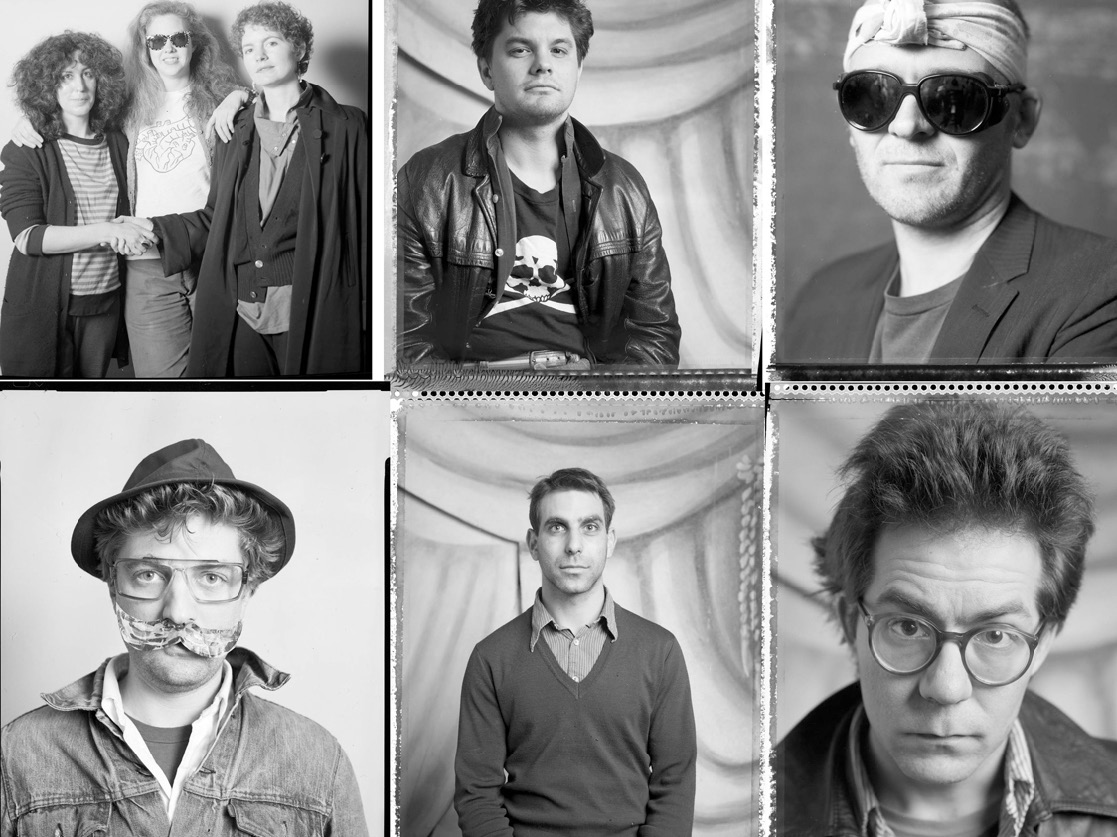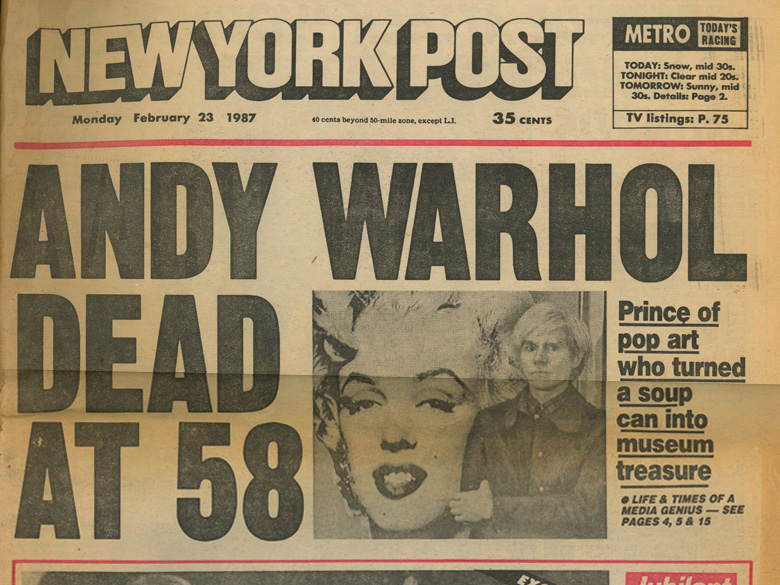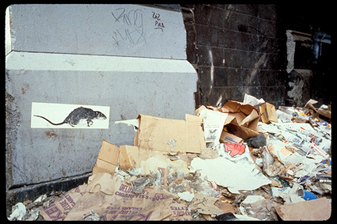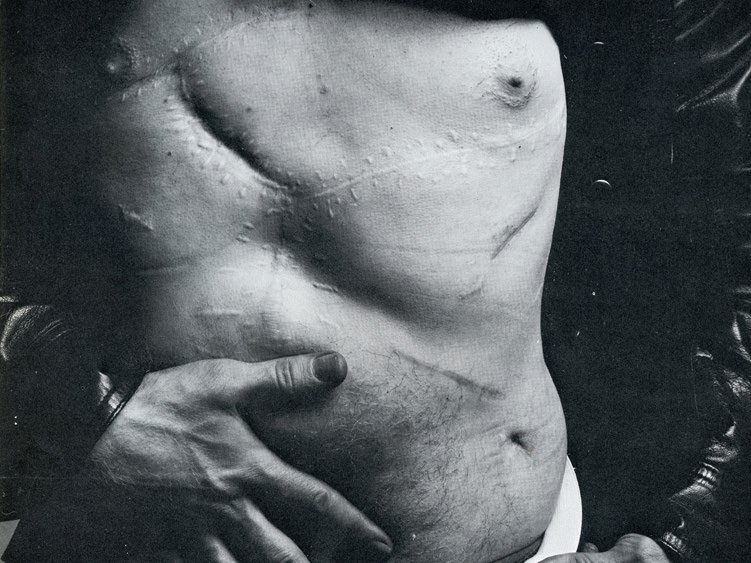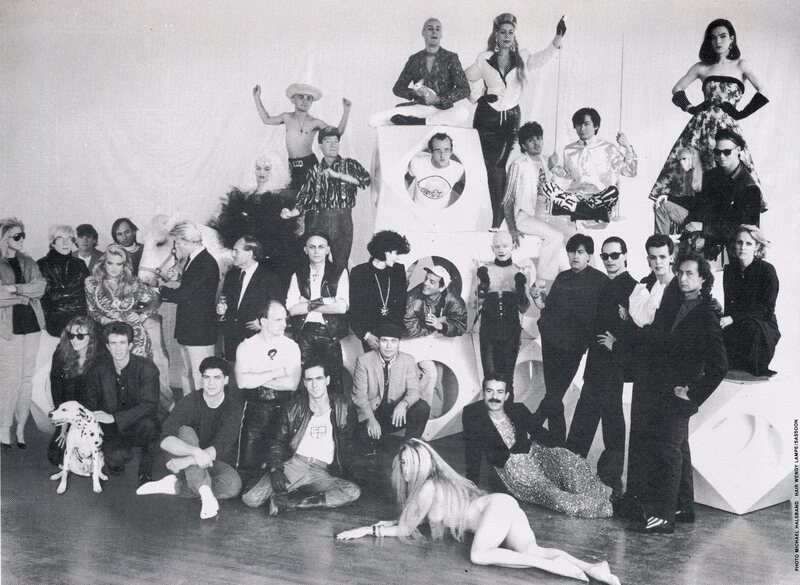Marlene Dumas: Fifty Years of Art Ephemera
When “open-end,” a large solo exhibition at the Palazzo Grassi opens in Venice (March 2, 2022–January 8, 2023), the painter Marlene Dumas will be adding to her remarkable forty-year career that includes scores of exhibitions at top galleries and museums throughout Europe and the U.S. A valuable byproduct of this exhibition history is a large cache of gallery cards, brochures, posters and other promotional materials that along with some photographs provide the content for this online exhibition at Gallery 98, a specialist in the growing field of art ephemera. Marlene Dumas was born in Cape Town, South Africa in 1953, and moved at the age of twenty-three to the Netherlands where she still lives and works today. Photographs from 1974 by Michael Oblowitz, who shared a studio with Dumas at the University of Cape Town, capture the young art student’s playful creativity. Dumas’ art developed quickly after her attendance at Ateliers ’63, an art school in Haarlem, and after a short stint at the University of Amsterdam where she studied psychology and art therapy. As early as 1978 she sold one of her works to Amsterdam’s prestigious Stedelijk Museum.
Much of Dumas’ career has been linked to the Amsterdam gallerist Paul Andriesse, the brother of her Ateliers ’63 classmate Erik Andriesse (1957–1993), who was also the cousin of her future husband Jan Andriesse (1950–2021). In addition to being a gallerist, Paul Andriesse is also a talented photographer who has been taking pictures of Dumas throughout her career. A photograph of her on the night train heading to an exhibition in Basel, Switzerland records the frantic pace of her career after 1988. Dumas humorously alluded to her international success with an oversized calling card that along with her Amsterdam address included the words “I Am Not In The Country.”
Dumas’ primarily paints people, a subject with infinite possibilities that she explores from multiple perspectives depending on her mood. Most often starting with photographs clipped from magazines and newspapers, Dumas translates the images either into paintings in oil on canvas, or ink drawings on paper. Her impulse for accurate representation is combined with tendencies towards abstraction that are rooted in pictorial effects inherent in her materials, but that are also affected by her mood and emotions. As she noted in an essay about her art, “I am an artist who uses second-hand images and first-hand emotions.”
For her first solo shows Dumas and her gallerist Andriesse designed announcement cards that expressed the theme of the exhibition with a prominent title, and an evocative found image. For example, The Eyes of the Night Creatures (1985) that featured a photo of wide-eyed raccoons was created for an exhibition of portraits by Dumas that emphasized her subjects’ eyes. Later in her career, galleries almost always used Dumas’ paintings as illustrations for their announcement cards and promotional materials.
A wordsmith as well as a painter, Dumas gives great thought to the titles of her paintings, to the themes of her exhibitions, and to her short essays about her art. Listing some titles gives a sense of her wide-ranging interests: Naked Bodies, The Origin of the Species, The Blonde, The Brunette and The Black Woman, Pretty Boys, The Private Versus The Public, Death as Model, Osama Bin Laden, Rejects, Pornographic Tendency, Man Kind, The Semite, and Magdalena.
Dumas often gravitates towards disgruntled, anguished and threatening subjects. She is fascinated by taboos, and likes to push boundaries. The vaguely obscene collage-postcard she sent to her friend Oblowitz in 1977 includes a quotation from Lenny Bruce, “The same dirty type that pisses in the ocean.” Sexuality, and the relationship of the sexes are also frequent Dumas subjects. A limited edition set of playing cards that she designed in 1998 is titled Dangerous Women Defeated Men.
The collection of ephemera in this online exhibition provides a condensed survey of Dumas’ art and career. It includes images of some of her most popular paintings: Waiting (for meaning) (1988), which shows a nude woman reclining on a coffin-like bed; The Painter (1994), featuring Dumas’ five-year-old daughter Helena with her hands covered with paint; and works from the Magdalena Series which often feature black female nudes.
Gallery 98 is grateful to Paul Andriesse and Michael Oblowitz for their help with this exhibition.

From the Collection
$75
$100
$75
$75
$100
$125
$300
$75



